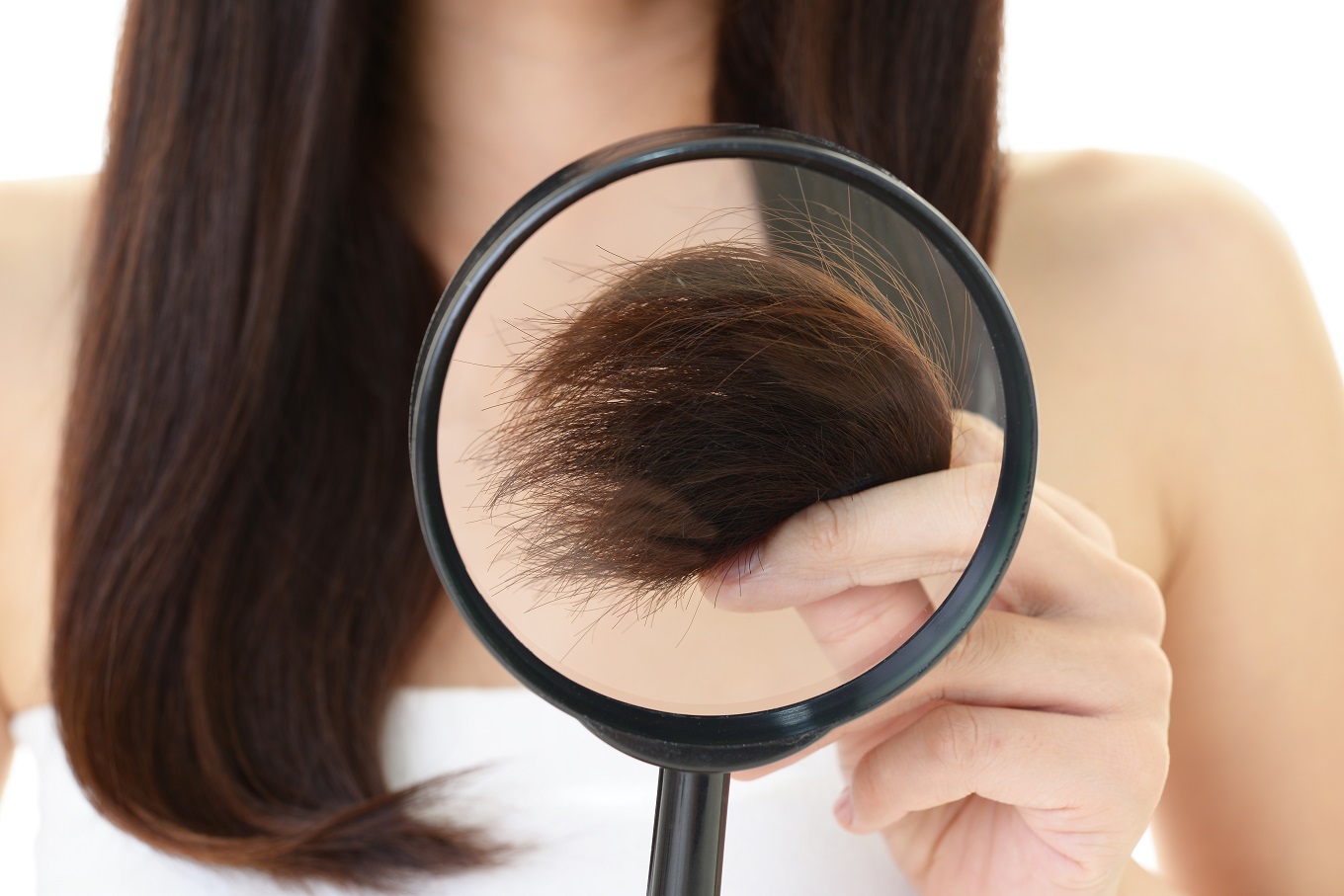Hair porosity is another term worth knowing. It tells you a lot about your hair structure, how it behaves while styling, how to take care of it and what some common problems are.
Hair does not have a smooth structure. Contrary to our beliefs, hair is not as smooth as a sheet of glass. Its external layer is made up of cuticle scales – calloused keratin layer. It is clearly visible under the microscope: scales look like overlapping tiles. Human hair is made up of 7-10 scale layers. The scales do not always cling to hair – they can raise to lesser or larger extent. The gaps and holes in the cuticle layer define the condition of hair and its porosity. The more raised scales are, the higher the porosity which has a direct influence on the appearance and condition of your hair.
There are 3 types of porosity:
LOW POROSITY is characteristic for hair that is smooth and heavy, hard to nourish, easily weighed down with unsuitable hair care. There is no proper blood circulation in the scalp. Hair and scalp get oily. Low porosity hair lacks volume and it is difficult to lift the roots.
MEDIUM POROSITY is characteristic for hair that is quite easy to style yet falls out because of weak hair follicles. The scalp can get oily whereas ends become dry and frizzy. Medium porosity hair has slightly raised scales. Consequently, nutrients have the easy way in but toxins also get inside the hair without a problem. Hair is prone to damage, loses shine and elasticity.
HIGH POROSITY is characteristic for dry and damaged hair. Its scales are highly raised. Hair is brittle and loses moisture. Hair ends are split. It is extremely hard to nourish high porosity hair. Nutrients cannot stay inside hair structure because of large gaps in the keratin layer.
If you want your hair care to be successful, you must match products to your hair porosity. It allows for fighting problems characteristic for a particular type of porosity.
Oils are made of molecules that have different sizes, depending on the dominant fatty acids. The molecules can fit between the gaps on the hair surface and deliver maximum effects. In other words: natural oils satisfy the needs of your hair, providing full care and repair.
The size of molecules depend on the proportions of fatty acids in a particular oil. Therefore, if you know your hair porosity, you should pick oils with a particular type of fatty acids. The best idea is choosing a ready-made blend of natural oils that are suitable for a given hair structure.
Considering the size of molecules and content of fatty acids, there are three types of oils. Each matches a particular type of porosity.
1. Penetrating oils and butters with the majority of saturated fatty acids. Their molecules are small and ideally match low porosity hair as they do not weigh strands down. They give softness and lightness.
– Low porosity likes the following oils: coconut, babassu, palm, cupuacu, pine, cocoa and shea.
2. Semi-penetrating oils with the majority of monounsaturated omega-7 and omega-9 fatty acids. Their medium-sized molecules are perfect for medium porosity hair. They add shine, protect from damage and heat, beautify and prevent thinning and frizz.
– Medium porosity likes the following oils: camellia, moringa, buriti, apricot, macadamia, argan and almond.
3. Non-penetrating oils with the majority of polyunsaturated omega-3 and omega-6 fatty acids. They are made up of large molecules – ideal for high porosity hair structure. Such oils have the ability to deeply repair, add bounce and a suitable level of moisture.
– High porosity likes the following oils: grapeseed, avocado, black seed, evening primrose, sunflower.

